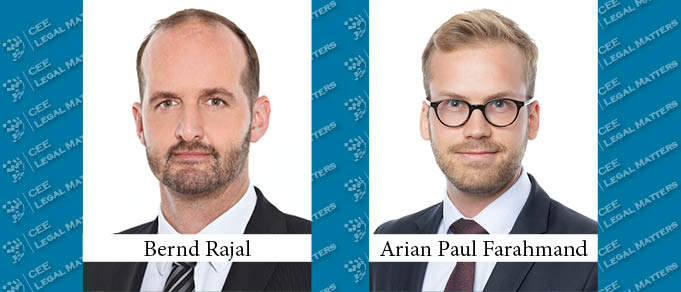Gas is of particular economic importance for Austria. In addition to production, infrastructure (including the Baumgarten gas hub), transportation, trade, and supply-secure coverage of gas demand play a major role. Yearly demand of roughly 80 to 90 terawatt-hours, constant over the last ten years, is generated by the manufacturing and energy sectors, non-energy consumption, agriculture, private households, power plants as conversion applications, transport, and the service sector. With a share of about 15%, gas also plays an important role in Austria’s electricity generation, primarily by providing flexible capacities that can be utilized at short notice to stabilize the power grid.
Due to its geographical location, Austria is a transit country for gas, and due to its relatively low domestic production (approximately 11% of domestic consumption), it is heavily dependent on imports.
The 2020 Coordinated Network Development Plan (KNEP) for the gas transmission infrastructure in Austria for 2021 – 2030 was approved by the regulatory authority on March 24, 2021. When preparing the KNEP, coherence with the European Ten-Year Network Development Plan 2020 (TYNDP) must be considered.
Infrastructure Standard
According to the KNEP, the infrastructure standard for Austria in the Market Area East, determined using a standardized method, is currently 140%, significantly above the target of 100% (according to Art 5 Regulation (EU) 2017/1938 concerning measures to safeguard the security of gas supply). Nevertheless, especially when international dependencies are considered, situations may arise where full gas supply can only be ensured by expanding capacities.
Cross-Border Projects
Some of the projects included in the KNEP are cross-border projects which were reported within the framework of the European TYNDP and have Project of Common Interest (PCI) status. PCIs are important, mainly cross-border infrastructure projects (gas, electricity, oil, SmartGrid) in the European Union with the aim to make affordable, safer, and sustainable energy available to all citizens in line with the Paris climate change tar-gets. These projects are eligible to receive public funds. The 4th PCI list includes only the Gas Connect Austria GmbH (TSO) project 2015/08 at the Murfeld entry/exit point, already approved to continue without any changes. In the past ten years, more than 90% of Slovenia’s domestic consumption and exports to Croatia were supplied via the Murfeld/Cersak cross-border transfer point. The project serves to cover the additional notified demand at the Murfeld entry/exit point.
A new GCA 2020/01 Czech-Austrian-Interconnector (CZATi) project for additional capacities was submitted. This project is required to support the North-South corridor, reduce market isolation, increase the security of supply for the Czech Republic and Austria, and provide transport routes for alternative gas sources. The planned investment costs amount to EUR 114 million. The implementation period was estimated at four-and-a-half years.
Regarding the economic efficiency of the investments included in the KNEP, it should be noted that the costs associated with the implementation of approved measures are included in the cost basis for setting the system charges pursuant to 69 GWG 2011, which is determined periodically by the regulatory authority. A final assessment of the reasonable costs associated with the implementation of measures envisaged in the network development plan will be made by the authority after the investment in the course of the cost determination.
Hydrogen
In the Hydrogen Map project, a vision for a possible dedicated hydrogen transmission network is being developed, in cooperation between the transmission system operators Gas Connect Austria and Trans Austria Gasleitung and the market area manager AGGM, based on the existing transmission network. The object of the study is to divide the existing gas network into separate networks for methane and hydrogen, in the case of a correspondingly changing capacity demand over time. Modifications will be necessary when gas pipelines are converted to pure hydrogen pipelines. The basic idea behind the development of a hydrogen pipeline network is to establish a hydrogen supply infrastructure that is as cost-effective as possible while continuing to operate an existing methane infrastructure in parallel.
By Bernd Rajal, Partner, and Arian Paul Farahmand, Associate, Schoenherr
This Article was originally published in Issue 8.8 of the CEE Legal Matters Magazine. If you would like to receive a hard copy of the magazine, you can subscribe here.

















